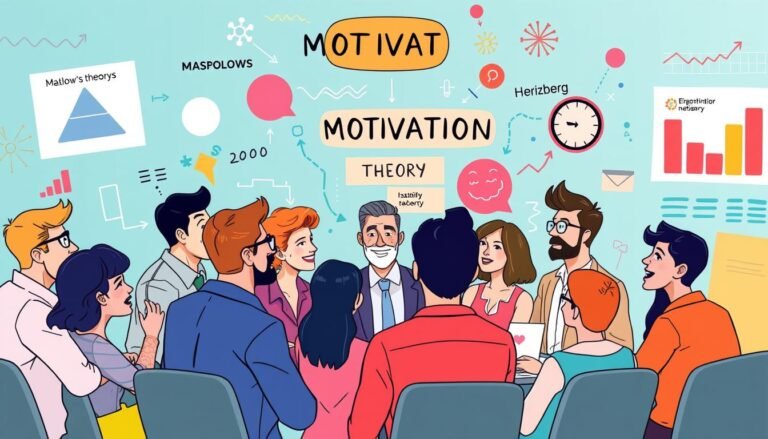Job Burnout Interventions That Work: Psychological Solutions for Leaders
Are you feeling overwhelmed and exhausted at work? Wondering if you’re on the brink of burnout? You’re not alone. Job burnout is a big problem in today’s fast-paced work world. This article will explore effective ways for leaders to fight burnout and create a healthier work place.
Recent studies show burnout is common, especially in stressful jobs. A 2018 study in JAMA found 37.9% of doctors experience burnout. This shows we need to act fast to help. By using the right stress management strategies, we can make work better for everyone.
Workplace wellness programs are key in stopping burnout. They create a supportive work space that cares about mental health. With things like mindfulness workshops and flexible hours, these programs can make a big difference. Leaders who invest in these see better productivity and less turnover.
Employee assistance programs are also crucial in fighting burnout. They offer confidential counseling, financial help, and more. By supporting employees in this way, companies show they care about their well-being. This builds a culture of care and understanding.
Key Takeaways
- Burnout affects 37.9% of physicians, highlighting the need for intervention
- Workplace wellness programs can significantly reduce stress and improve job satisfaction
- Employee assistance initiatives provide crucial support for personal and professional challenges
- Effective stress management strategies are essential for preventing burnout
- Leaders play a critical role in implementing and supporting burnout prevention measures
Understanding Occupational Burnout
Occupational burnout is a big issue in today’s fast-paced work world. It affects people in many industries, hurting their mental health and work performance. Studies show that about 18% of people in some places feel very burned out. This shows we need better ways to prevent burnout and support mental health.
Definition and Recognition by WHO
The World Health Organization (WHO) now officially calls burnout an occupational issue. This move shows how important it is to tackle burnout in the workplace. Burnout mainly hits those in jobs that deal with people, like teachers and doctors. But it can happen in any job.
The Process of Burnout Development
Burnout grows over time, marked by feeling tired, cynical, and less committed. The work environment is key, with too much work, long hours, and little control leading to burnout. Also, unclear roles, not enough support, and no feedback make things worse.
Theories Behind Burnout Etiology
Many theories explain why burnout happens. The Organizational Theory says it’s from work stress and not having good ways to cope. Personal issues, like stress management problems and negative views of oneself, also raise burnout risk. Some studies even link genetics to being more emotionally vulnerable to burnout.
| Burnout Factor | Impact | Prevention Strategy |
|---|---|---|
| Heavy Workload | Increased stress and exhaustion | Workload management and prioritization |
| Lack of Control | Feelings of helplessness | Increase employee autonomy |
| Insufficient Support | Isolation and reduced motivation | Implement mentorship programs |
| Unclear Roles | Confusion and frustration | Clear job descriptions and expectations |
The Impact of Burnout on Organizations and Individuals
Burnout affects both organizations and individuals deeply. It impacts health, economics, and workplace dynamics. It’s key to understand these effects to help employees and improve work environments.
Health Consequences
Burnout has serious health effects. It’s linked to depression, especially in its exhaustion form. It can cause more health problems, anxiety, and even suicide risk. Healthcare workers during COVID-19 showed high burnout rates, showing the need for mental health support.
Economic and Social Costs
The economic cost of burnout is huge. In the U.S., it costs $1 to $2 billion a year for doctors and vets. This cost comes from less work done, more time off, and more people leaving their jobs. Companies are now seeing the value of work-life balance to cut these costs.
Productivity Loss and Turnover
Burnout hurts work performance and keeps employees from staying. A study showed 25% of workers feel burned out. This makes them less engaged, hurting their and the company’s work. To fight this, many firms are starting wellness programs to reduce stress and boost well-being.
| Impact Area | Statistics |
|---|---|
| Mental Health Priority | 80% of HR leaders globally consider it top priority |
| Wellness Program Offering | 90% of organizations worldwide offer some form |
| Burnout Symptoms | 25% of employees report experiencing symptoms |
These numbers highlight the urgent need for tackling burnout. By focusing on employee well-being, companies can avoid big costs. This leads to a more productive and happy workforce.
Recognizing Signs and Symptoms of Burnout
Burnout is a big problem in many workplaces. A 2019 report found that 44% of doctors feel burned out. This shows we need good ways to handle stress and support mental health in tough jobs.
Spotting burnout early is key to helping. Signs include feeling less efficient, less motivated, and making more mistakes. You might also feel very tired.
Feeling irritable, frustrated, or detached are emotional signs. In bad cases, people might turn to alcohol or drugs. It’s common for people to deny these feelings, thinking they’re just tired.
“Burnout is a state of emotional, physical, and mental exhaustion caused by excessive and prolonged stress. It reduces productivity and saps energy, leading to feelings of helplessness, hopelessness, cynicism, and resentment.”
Companies can help prevent burnout. They can offer training and make work places supportive. Research shows that feeling supported by managers can cut burnout by 70%.
| Risk Factor | Impact on Burnout |
|---|---|
| Unclear job expectations | 60% of workers report not knowing what’s expected, increasing burnout risk |
| Unfair treatment at work | 2.3 times more likely to experience high burnout levels |
| Lack of time for work | 70% higher burnout risk when insufficient time is provided |
By spotting these signs and using the right stress management, companies can make work better. They can help their employees stay mentally healthy.
Job Burnout Interventions: Types and Approaches
There are many ways to prevent burnout at work. Let’s look at the main types of interventions that can help fight job burnout.
Individual-Level Interventions
These focus on helping employees deal with stress. Workplace wellness programs often include mindfulness practices. Studies show they are very helpful.
Other methods include meditation, yoga, and even things like gratitude journaling and joining a choir.
Organization-Directed Interventions
These aim to change the workplace itself. They might include:
- Staff training and workshops
- Cognitive-behavioral programs
- Cultural shifts within the organization
- Adjustments to workplace practices
These changes help with job autonomy, security, and engagement. They also promote a fair and equal work culture.
Combined Interventions
The best approach combines individual and organizational strategies. Employee assistance programs offer both personal stress tools and workplace changes. This way, they tackle work stress and boost employee strength.
Research shows that 29 out of 33 studies found these interventions effective. They improved well-being, work engagement, and resilience. They also reduced burnout, stress, anxiety, and depression.
“Providing workplace health and wellness programs can prevent burnout and stress, increase employee lifestyle choices, reduce turnover rates, and improve productivity.”
By using a mix of these interventions, companies can make a healthier work place. They can also support their employees’ well-being better.
The Role of Exhaustion in Burnout Prevention
Exhaustion is key in stopping burnout. It’s the first sign and the only agreed-upon part of burnout. Knowing its role helps create good ways to manage stress and prevent burnout.
Centrality of Exhaustion in Burnout Measures
Exhaustion is a main part of burnout tests. The Maslach Burnout Inventory (MBI) sees it as a core part. This shows it’s a good way to check if workplace wellness works.
Focus on Early Symptoms for Effective Prevention
Dealing with exhaustion early stops other burnout signs. It’s better to catch it early than when it’s worse. This matches how burnout grows, from the Honeymoon Phase to Chronic Burnout.
| Burnout Stage | Key Characteristics | Prevention Focus |
|---|---|---|
| Honeymoon Phase | High job satisfaction, energy | Establish healthy work habits |
| Onset of Stress | Initial signs of exhaustion | Implement stress management strategies |
| Chronic Stress | Persistent exhaustion | Intensify burnout prevention techniques |
| Burnout | Full-blown exhaustion | Immediate intervention needed |
By focusing on exhaustion, companies can make better wellness programs. These programs help stop burnout early. They make work places healthier and more productive.
Effective Organizational Interventions for Burnout Prevention
Organizations have a big role in stopping burnout among employees. They can make a healthier work place. This helps lower the chance of burnout.
Participatory Interventions
Getting employees involved in decisions helps a lot. It makes them feel more in control. For example, team meetings to talk about work and solve problems can make everyone feel better.
Workload-Focused Interventions
Too much work can lead to burnout. Companies can tackle this by:
- Setting realistic goals
- Sorting tasks by importance
- Adding more help when needed
These steps help keep work and life in balance. They stop people from getting too tired.
Work Schedule Adjustments
Flexible work hours can really help. Companies can offer:
- Shorter workweeks
- Working from home
- Flexible hours
These changes help employees balance work and life. They make people happier and healthier at work.
Adding help like counseling or stress workshops is also good. By mixing these steps with personal efforts, companies can fight burnout. They can make a better, more productive place for everyone.
Leadership Strategies for Implementing Burnout Interventions
Leaders are key in stopping burnout and making work places healthy. They use strategies like mental health support, teaching resilience, and improving work culture. Studies reveal burnout in healthcare workers during COVID-19 was between 40% to 70% worldwide.
- Provide clear expectations and necessary resources
- Enforce reasonable work hours
- Assess and adjust workloads
- Encourage social support within teams
- Promote physical activity during the workday
- Strongly encourage regular breaks
Training in resilience helps employees handle stress better. A study found it cut burnout in doctors by 33%. Leaders should also work on making the work culture supportive.
“Addressing burnout requires a multifaceted approach that combines individual and organizational interventions.”
Using these strategies can greatly improve how employees feel and work. A study showed that work place changes cut burnout by 14% on average. Leaders should focus on mental health and talk openly about stress and burnout.
| Intervention Type | Impact on Burnout | Implementation Difficulty |
|---|---|---|
| Resilience Training | 33% reduction | Moderate |
| Organizational Changes | 14% reduction | High |
| Work Hour Limits | 10% reduction | Low |
Measuring the Effectiveness of Burnout Interventions
It’s key for companies to check how well their wellness programs work. They can use special tools and track important signs to see if their stress management plans are helping.
Assessment Tools and Scales
There are many ways to measure burnout in the workplace:
- Maslach Burnout Inventory (MBI)
- Copenhagen Burnout Inventory (CBI)
- Burnout Assessment Tool (BAT)
These tools give insights into how well employees are doing and if the programs are working. A study looked at 27 samples and found that interventions had a small but significant effect.
Key Performance Indicators
Companies can look at different things to see if their burnout prevention is working:
- Changes in exhaustion scores
- Productivity metrics
- Absenteeism rates
- Employee turnover
In England, during the first COVID-19 wave, mental health sickness days in the National Health Service went up. This shows why good stress management is so important.
By checking these signs often, companies can make their wellness programs better. They can focus on early signs and use specific help to keep their work environment healthy and reduce burnout.
Conclusion
Job burnout interventions are key to a healthy workforce. Workplace wellness and improving organizational culture are vital. Research shows that combining individual and organizational strategies works best to reduce exhaustion.
Health care organizations lead the fight against burnout. They’re creating initiatives to boost professional well-being and improve patient care. These efforts aim to make work environments positive, manage workload, and encourage teamwork.
Studies suggest that interventions focusing on teamwork and workload are effective. Although the impact is small, it’s a positive step. Moving forward, we must keep improving job burnout interventions to prevent and manage this issue effectively.
Source Links
- Strategies and Interventions to Improve Healthcare Professionals’ Well-Being and Reduce Burnout
- Burnout response for leaders – Workplace Strategies for Mental Health
- Therapeutic Strategies to Tackle Burnout and Emotional Exhaustion in Frontline Medical Staff: Narrative Review
- Online Training – Understanding and Preventing Burnout among Public Health Workers | NIOSH
- Burnout | Psychology Tools
- Organizational interventions and occupational burnout: a meta-analysis with focus on exhaustion
- Burnout: A Review of Theory and Measurement
- Addressing employee burnout: Are you solving the right problem?
- How to Watch for Signs of Burnout in Your Life
- Know the signs of job burnout
- Burnout: Symptoms, Treatment, and Coping Strategy Tips
- Original research: Workplace interventions to improve well-being and reduce burnout for nurses, physicians and allied healthcare professionals: a systematic review
- Workplace Interventions for Preventing Burnout » OccuMed Occupational HealthWorks
- Interventions to reduce burnout among clinical nurses: systematic review and meta-analysis – Scientific Reports
- Preventing burnout: 7 strategies and when to seek help
- The role of psychosocial working conditions on burnout and its core component emotional exhaustion – a systematic review – Journal of Occupational Medicine and Toxicology
- In Search of the Most Effective Interventions for Physician Burnout
- Frontiers | Interventions to reduce stress and prevent burnout in healthcare professionals supported by digital applications: a scoping review
- Workplace Interventions Can Reduce Stress and Burnout
- Protocol: Implementing complex interventions to mitigate burnout among qualified healthcare professionals: a realist review protocol
- The Role of Leadership in Preventing Employee Burnout | Amaha
- Interventions to reduce burnout among clinical nurses: systematic review and meta-analysis
- Workplace interventions to improve well-being and reduce burnout for nurses, physicians and allied healthcare professionals: a systematic review
- Conclusions and Recommendations – Taking Action Against Clinician Burnout
- Organizational interventions and occupational burnout: a meta-analysis with focus on exhaustion – International Archives of Occupational and Environmental Health







